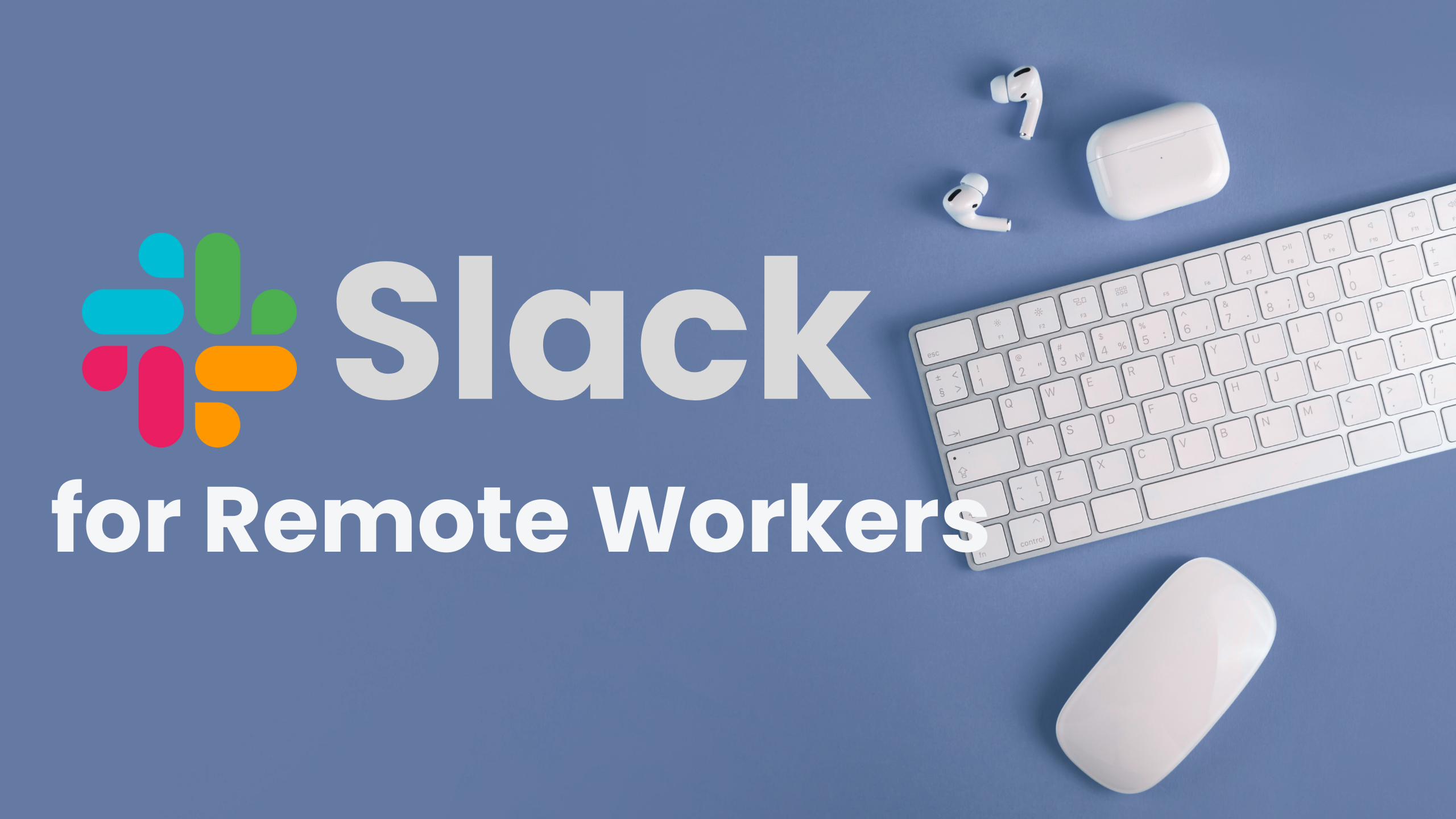In today’s fast-paced remote work environment, staying organized and focused is no longer optional it’s essential. As more professionals embrace location-independent careers, the demand for tools that enhance efficiency, streamline communication, and reduce digital chaos continues to grow. That’s why finding the best productivity apps for remote workers is a game-changer in 2025.
Whether you’re managing deadlines from a home office, collaborating across time zones, or freelancing from a coffee shop, the right tools can dramatically boost your daily output. From time tracking apps for remote freelancers to project management tools for distributed teams, productivity platforms now offer tailored solutions that adapt to your unique workflow.
These tools aren’t just about getting more done they’re about working smarter. With the right combination of apps, you can improve focus while working remotely, automate repetitive tasks, and maintain better work-life balance, even when your office is entirely virtual. In this guide, we’ll explore the most powerful and user-approved apps that are transforming how remote professionals stay productive in 2025.
Best Productivity Apps for Remote Workers in 2025
Remote work isn’t just a trend anymore it’s a transformative shift in how we operate daily. With this evolution comes the need for high-performance tools that support focus, communication, organization, and workflow automation. If you’re a digital nomad, freelancer, or part of a distributed team, the right app stack can supercharge your efficiency.
In this guide, we’ll break down the best productivity apps for remote workers in 2025, analyzing their strengths, weaknesses, user ratings, and more. Whether you’re managing tasks solo or collaborating with global teams, there’s a solution tailored for your workflow.
Why Productivity Apps Are Vital for Remote Workers
According to a 2025 report by Statista, 74% of remote employees cite “lack of proper tools” as a top challenge impacting productivity. With digital overload and blurred work-life boundaries, having a clear system of apps can help:
- Manage time better
- Avoid context switching
- Collaborate seamlessly
- Track progress and output
💡 Pro Tip: Combine time-blocking apps with asynchronous collaboration tools to get the best of both worlds deep focus and team alignment.
Top 7 Productivity Apps for Remote Workers in 2025
1. Notion
Notion isn’t just a digital notebook or a task manager it’s a customizable operating system for your remote workflow. In 2025, it has become a go-to tool for professionals who want to break free from the limitations of traditional productivity software. With its drag-and-drop interface and block-based structure, Notion allows remote workers to build their workspace the way they think, not the way software dictates.
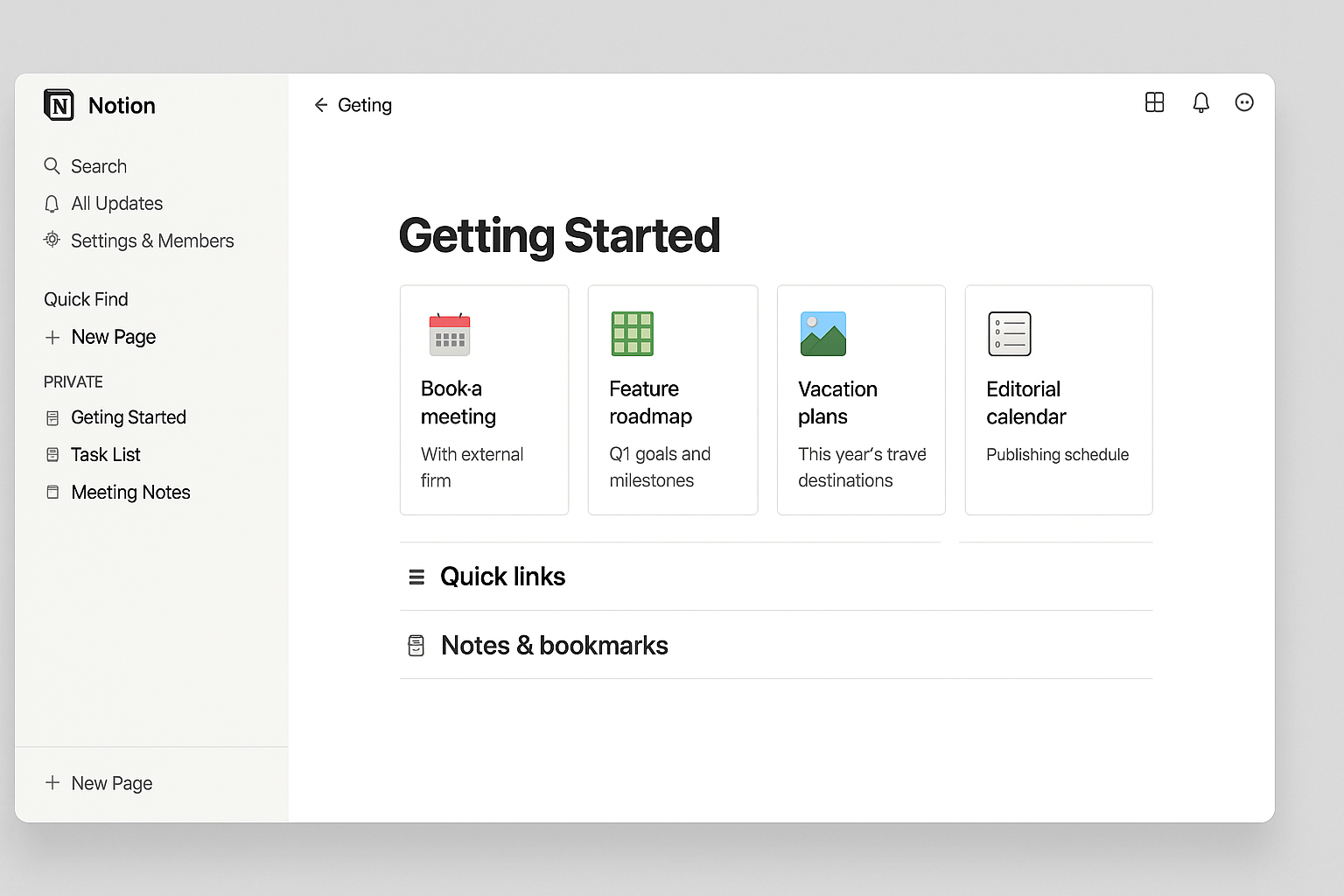
What sets Notion apart is its unmatched flexibility. You can create a project tracker that doubles as a content calendar, turn meeting notes into action items, or maintain a client database all within one interface. For remote teams, this means fewer tabs, less app-switching, and more clarity across the board.
One of the biggest advantages of using Notion as a remote professional is how seamlessly it scales from personal productivity to team collaboration. Start solo with a weekly planner, then gradually invite team members to collaborate on projects, share real-time updates, and co-edit documents. No more juggling Google Docs, Trello boards, and Slack messages just to get one task across the finish line.
Moreover, the rise of Notion templates for remote workers has streamlined the onboarding process. Whether you’re setting up a goal tracker, CRM, or knowledge base, there’s likely a ready-to-use template that fits your needs and you can tweak it to make it your own.
And with new AI integrations rolling out, Notion now supports context-aware summaries, intelligent tagging, and predictive task suggestions all designed to minimize decision fatigue for remote professionals.
In a world full of niche productivity tools, Notion stands out as the ultimate all-in-one productivity app for remote workers who want both structure and creativity in their digital workspace.
Best For: All-in-one workspace, knowledge base, and task management
- User Rating: ★★★★★ (4.8/5 on G2)
- Advantages:
- Combines docs, tasks, and databases
- Great for team collaboration and wikis
- Real-time syncing with offline access
- Disadvantages:
- Can feel overwhelming for new users
- Slightly slower performance on mobile
- Pricing: Free for individuals; starts at $8/month for teams
- Notion Link: Notion Official Website
📊 Stat Insight: 67% of startups use Notion as their primary documentation and project tracking tool.
2. Trello
Trello has long been a favorite among remote professionals who prefer simplicity over feature bloat. But in 2025, it has matured into something much more than a digital to-do list. For remote workers, Trello is a visual command center that helps transform scattered ideas into structured action without the steep learning curve that often comes with project management tools.
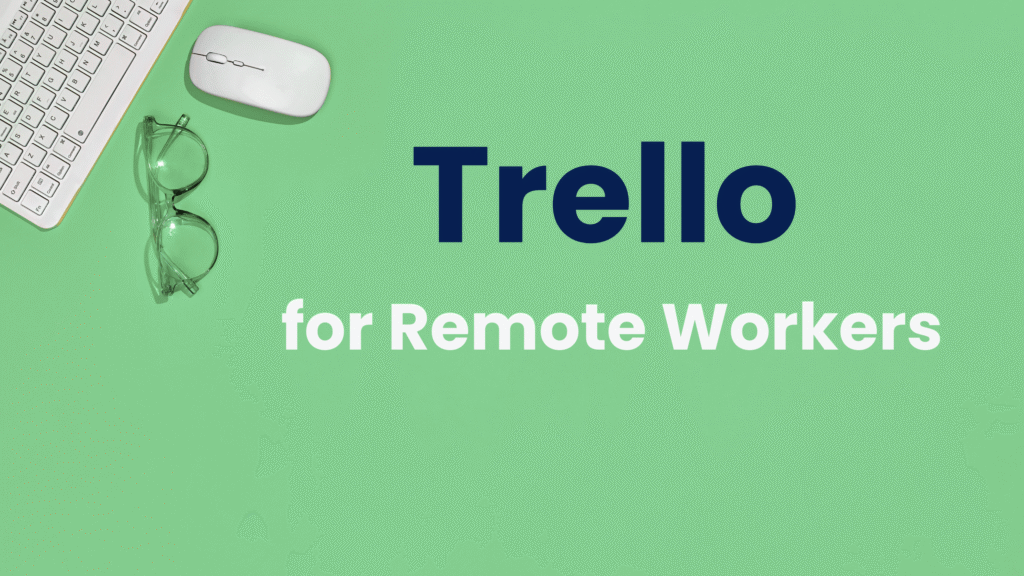
What makes Trello shine is its card-based system, which mirrors the way people naturally think and organize. You can start with something as simple as a “To Do, Doing, Done” board and gradually evolve into more complex workflows using labels, checklists, due dates, and custom fields. It’s especially ideal for remote creatives, content marketers, product teams, and solopreneurs who value visual clarity in remote task management.
Another key advantage is how Trello fosters transparency in remote teams. Everyone can see what’s in progress, what’s delayed, and what’s done without needing a status update meeting. You can tag teammates, assign deadlines, attach files, and even automate repetitive actions using Trello’s built-in automation tool, Butler. This reduces the need for third-party add-ons and keeps your process lean and streamlined.
In 2025, Trello has also introduced advanced workspace templates tailored for remote work, like “Agile Sprint Boards,” “Content Pipelines,” and “Client Onboarding Flows.” These templates reduce setup time and help teams hit the ground running, even if they’re spread across five continents and twelve time zones.
Plus, Trello now integrates natively with tools remote workers already love like Zoom, Google Drive, Slack, and even time tracking apps like Clockify. This makes it effortless to centralize work without abandoning your existing tech stack.
If your remote workflow feels chaotic or cluttered, Trello offers a no-friction path to get organized, prioritize clearly, and stay on track all in a format that’s as simple or sophisticated as you need it to be.
Best For: Visual project management using Kanban boards
- User Rating: ★★★★☆ (4.5/5 on Capterra)
- Advantages:
- Easy-to-use drag-and-drop interface
- Power-ups for time tracking, automations
- Integrates with Slack, Google Drive, Zapier
- Disadvantages:
- Limited features in free version
- May not scale well for complex workflows
- Pricing: Free; Premium starts at $10/month
- External Link: Trello by Atlassian
3. Zapier
Zapier isn’t flashy but it’s undeniably powerful. In 2025, as remote workflows become more complex and app-stacks grow deeper, Zapier serves as the quiet engine that keeps everything running smoothly in the background. For remote workers managing dozens of platforms, Zapier offers seamless automation that saves hours without requiring a single line of code.
Unlike conventional productivity tools that require daily interaction, Zapier’s magic lies in its invisibility. It connects over 6,000 apps from CRMs and email platforms to time trackers and calendars and enables them to “talk” to each other automatically. Think of it as the glue that holds your digital workspace together.
What makes Zapier particularly valuable for remote professionals is its ability to eliminate manual, repetitive tasks. For instance, you can set up an automated workflow (called a “Zap”) to instantly save Gmail attachments to Dropbox, log Slack messages in a Notion database, or add Zoom recordings to a shared Google Drive folder all without lifting a finger.
Read Also: Zapier Workflow Tutorial: Automate Workflows with Zapier (No Coding Needed)
In a remote setting, where async workflows and multi-platform juggling are the norm, this automation can reclaim valuable mental bandwidth. Remote freelancers use it to send invoices automatically; distributed teams use it to trigger Trello cards from form responses; and virtual assistants rely on it to centralize client communications from various platforms.
Even better, Zapier now includes AI-enhanced automation suggestions, helping you identify time-saving opportunities by analyzing your existing app usage patterns. This makes it easier than ever to optimize workflows without having to manually audit every process.
For anyone serious about productivity, Zapier isn’t just an app it’s a force multiplier. By automating what you hate doing manually, it empowers remote workers to focus on what truly matters: deep work, creativity, and connection.
Best For: Workflow automation between different apps
- User Rating: ★★★★★ (4.7/5 on Product Hunt)
- Advantages:
- Connects 5,000+ apps (Google Sheets, Slack, Dropbox, etc.)
- Automates repetitive tasks
- Saves hours weekly for remote teams
- Disadvantages:
- Can get expensive at scale
- Complex workflows have a learning curve
- Pricing: Free for basic; Paid starts at $19.99/month
- External Link: Zapier Workflow Automation
📈 Stat Insight: Remote teams using Zapier save an average of 8.2 hours per week per employee.
4. Slack
In a world where remote teams span continents, cultures, and time zones, Slack has become more than just a messaging app it’s the digital heartbeat of distributed collaboration. While email is slow and clunky, Slack enables rapid communication that feels conversational, immediate, and highly organized. For remote workers in 2025, it’s the go-to platform for staying aligned without drowning in meetings.
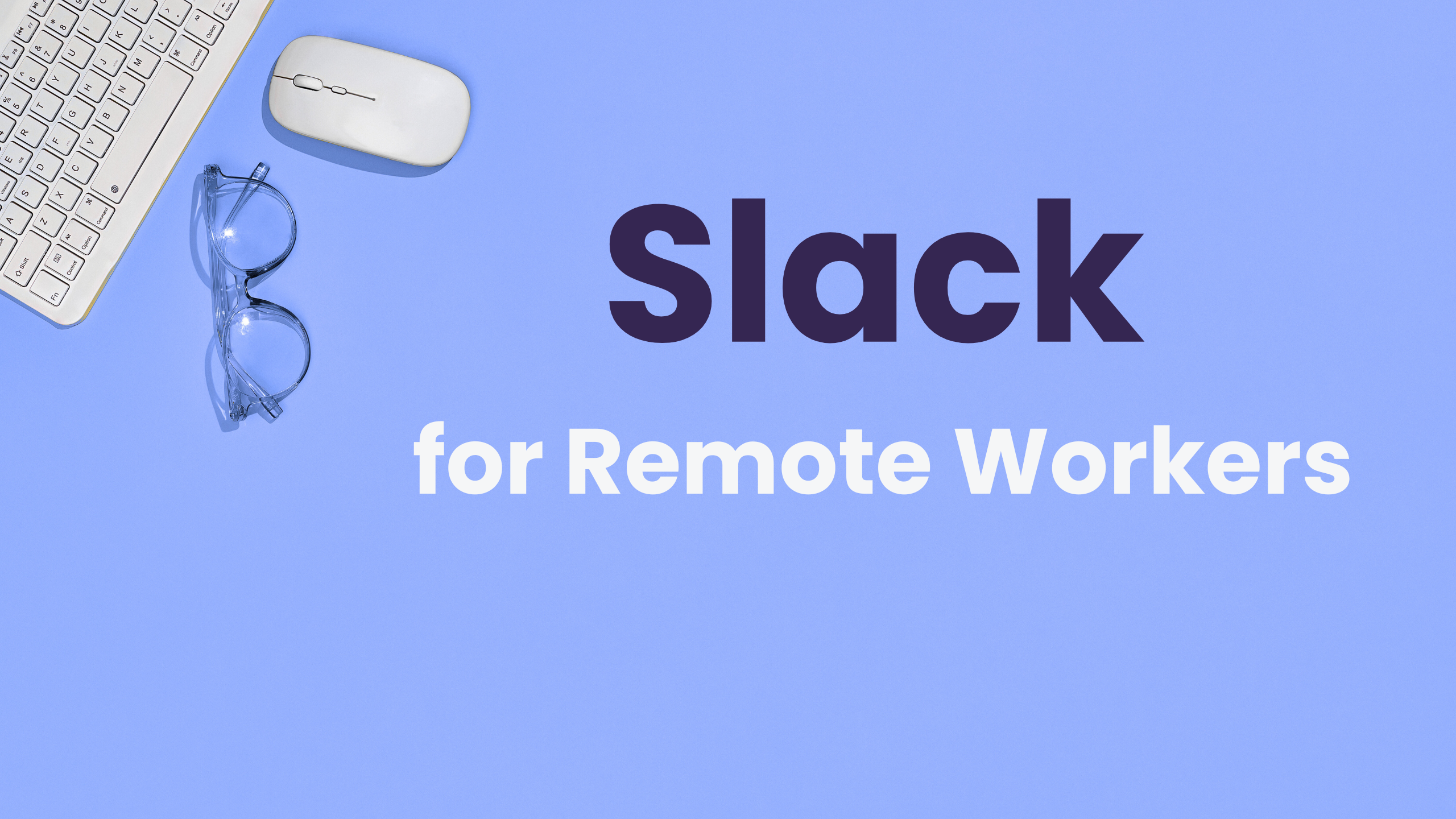
What sets Slack apart is its channel-based architecture, which helps remote teams separate discussions by project, department, or client. This makes it easy to jump into relevant conversations without sifting through endless email threads. Whether you’re checking in on a product sprint, marketing campaign, or client request, everything is organized, searchable, and right where you need it.
Slack’s real strength for remote work lies in its ability to reduce workplace silos and foster a culture of transparency. With features like huddles for spontaneous voice chats, thread replies to avoid clutter, and scheduled messages for asynchronous communication, it creates a digital environment that supports both focus and flexibility.
In 2025, Slack’s expanded integration ecosystem makes it even more powerful. You can now embed real-time Google Docs, trigger Zoom calls directly from threads, automate reminders with Zapier, and get notifications from tools like Trello, Notion, GitHub, or Salesforce all within Slack. This means your productivity apps for remote workers don’t have to compete they can converge into one centralized platform.
Slack’s AI capabilities have also grown significantly in 2025, offering smart summaries of unread conversations, suggested responses, and instant message translation ideal for global remote teams working across language barriers.
Whether you’re managing a growing startup or freelancing with multiple clients, Slack helps bridge the communication gap, cut through noise, and keep momentum alive even when your team is never in the same room.
Best For: Real-time team communication
- User Rating: ★★★★☆ (4.6/5 on G2)
- Advantages:
- Channels organize discussions by topic or team
- Powerful integrations with productivity tools
- Voice and huddle features built-in
- Disadvantages:
- Can become noisy and distractive
- Not ideal for deep work
- Pricing: Free for small teams; Paid starts at $7.25/user/month
- External Link: Slack Communication Tool
5. Todoist
In the sea of productivity apps for remote workers, Todoist stands out for its simplicity, elegance, and laser-sharp focus on task management. While many tools try to do everything, Todoist does one thing exceptionally well: helping you plan your day and get things done—without overwhelming you.
For remote professionals juggling multiple responsibilities, Todoist provides a structured, distraction-free space to capture tasks, prioritize goals, and break projects into manageable actions. Whether you’re freelancing or working on a distributed team, its clean interface and intuitive organization make it one of the best tools for daily planning.
The real magic of Todoist lies in its natural language input and smart scheduling. You can simply type, “Submit client proposal every Monday at 10am,” and it instantly schedules the recurring task. For remote workers managing multiple projects or shifting priorities, this ease of use helps keep to-do lists dynamic and flexible.
In 2025, Todoist has evolved with AI-powered productivity insights, offering suggestions on when you’re most productive, what’s being delayed frequently, and how to rebalance your workload. For individuals working independently, these data-backed insights help create a more sustainable remote work rhythm preventing burnout while still hitting deadlines.
Plus, Todoist syncs across all devices, including smartwatches, tablets, and browsers. So whether you’re working from a café, in between client calls, or reviewing tasks on a lunch break, you’re never disconnected from your workflow.
With native integrations for Google Calendar, Slack, Outlook, Trello, and Zapier, Todoist becomes even more powerful when paired with other productivity apps for remote workers allowing seamless task syncing and cross-platform collaboration.
If your remote work life thrives on clarity, consistency, and control, Todoist offers a no-frills approach to daily task management that keeps you focused and forward-moving without the clutter.
Best For: Personal and team task tracking
- User Rating: ★★★★☆ (4.5/5 on Trustpilot)
- Advantages:
- Simple, elegant UI
- Natural language input (“Tomorrow at 5 PM”)
- Supports labels, priorities, and reminders
- Disadvantages:
- Advanced features locked behind paywall
- No built-in collaboration chat
- Pricing: Free plan; Premium starts at $4/month
- External Link: Todoist Task Manager
6. Clockify
If you’re working remotely and still guessing where your time goes each week, Clockify offers the clarity you’ve been missing. Unlike bulky enterprise trackers that feel intrusive, Clockify delivers a minimalist, flexible time management experience built specifically for freelancers, distributed teams, and remote-first companies.
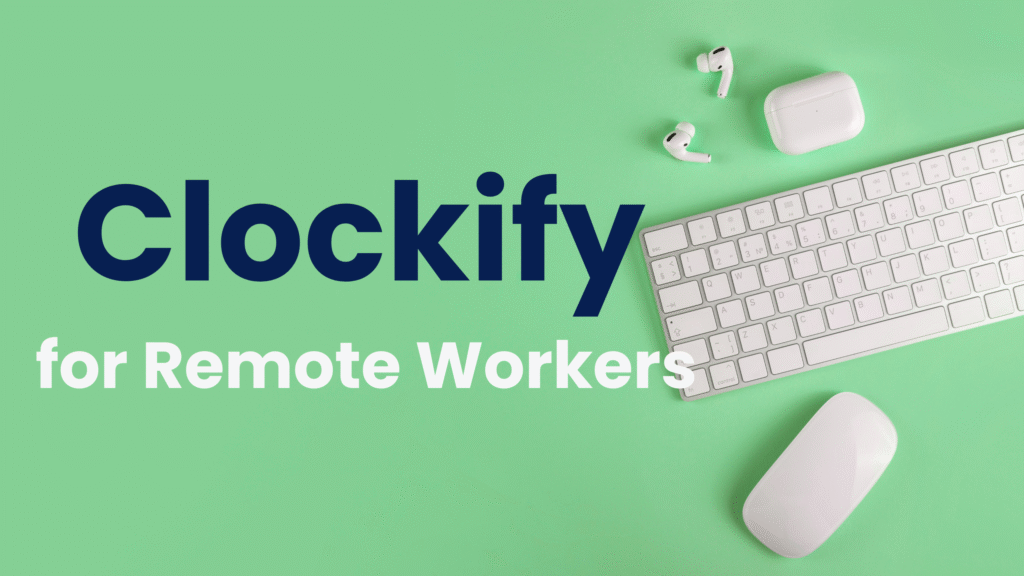
In 2025, remote professionals are no longer tracking time to “clock in” they’re tracking it to understand patterns, optimize productivity, and maintain better work-life boundaries while working remotely. That’s exactly where Clockify thrives. It lets you track hours across projects, clients, or tasks with just a few clicks whether you’re billing hourly or simply monitoring focus.
Clockify’s intuitive dashboard offers real-time insights into how you’re allocating your time broken down by project, client, and category. For digital nomads and solopreneurs, this makes monthly reporting and client invoicing effortless. For remote teams, it provides a bird’s-eye view of what’s getting done and what’s stalling—without micromanagement.
What makes Clockify stand out is its zero-cost barrier. Its free plan is robust enough to cover most solo and small team needs, including unlimited tracking, project tagging, and report exporting. Even as premium tools raise their paywalls in 2025, Clockify remains one of the best free productivity apps for remote workers.
Clockify also supports manual time entry, calendar view, idle detection, Pomodoro timers, and GPS tracking perfect for freelancers on the move or hybrid professionals managing both fieldwork and desk tasks.
And when paired with productivity insights and integrations like Zapier, Todoist, and Slack, Clockify transforms into a complete remote work time management system, not just a simple tracker.
Whether you’re focused on boosting efficiency, calculating billable hours, or simply trying to structure your workday more effectively, Clockify offers a no-fuss solution to mastering time in a remote environment.
Best For: Time tracking and billing for freelancers
- User Rating: ★★★★★ (4.8/5 on GetApp)
- Advantages:
- Unlimited tracking and projects in free version
- Reports and timesheet exports
- Idle time detection
- Disadvantages:
- Basic UI/UX compared to other trackers
- Lacks Pomodoro or focus timers
- Pricing: Free; Paid plans start at $3.99/month
- External Link: Clockify Time Tracker
7. Google Keep
In the fast-paced world of remote work, sometimes all you need is a clean, accessible way to jot down ideas without diving into a complex app. Google Keep fills this exact niche, offering an ultra-lightweight, cloud-synced note-taking tool that blends effortlessly into the digital ecosystem most remote workers already rely on.

Unlike heavier platforms that require structure and setup, Google Keep is designed for spontaneity. Whether it’s a brainstorm during a Zoom call, a quick grocery list, or a voice memo while commuting, Keep captures it all syncing instantly across devices through your Google account. This speed and simplicity make it a favorite for remote professionals who value agility over features.
One underrated feature of Google Keep is its color-coded labels and pinned notes. This makes it easy to visually prioritize urgent tasks, recurring reminders, and team ideas in a clutter-free space. Paired with the seamless integration with Google Docs and Calendar, it becomes more than just a digital sticky note it becomes a bridge between casual thought and structured productivity.
Read Also: The Only Google Keep Productivity Tutorial You’ll Need to Boost Focus and Clarity
In 2025, remote teams are increasingly turning to Keep for capturing stand-up notes, action points, and quick-reference data during meetings. It eliminates the friction of switching apps mid-call, especially when integrated with Google Meet and Gmail. You can even convert a Keep note into a Google Doc for collaborative editing ideal for turning personal notes into shared plans.
For freelancers and remote solopreneurs, Google Keep’s voice-to-text note capture is a game-changer. Dictate task ideas while walking or exercising, and they’ll be waiting in your synced account when you’re back at your desk. This kind of frictionless input supports asynchronous productivity perfect for remote professionals working across different time zones.
With no learning curve, zero cost, and instant availability on web, Android, iOS, and Chrome extensions, Google Keep is the ideal note-taking app for remote workers who want to stay organized without getting overwhelmed.
Best For: Quick notes, checklists, and reminders
- User Rating: ★★★★☆ (4.4/5 on Android Play Store)
- Advantages:
- Integrated with Google Calendar and Tasks
- Voice notes and image tagging
- Great for daily planning
- Disadvantages:
- No folder or tag hierarchy
- Lacks advanced formatting
- Pricing: Free
- External Link: Google Keep Notes
🎯 Learn how to fully utilize it in this Google Keep productivity guide.
What to Consider When Choosing a Productivity App
| Factor | Why It Matters |
|---|---|
| Ease of Use | Smooth onboarding boosts adoption and daily use. |
| Integration | Sync with other tools (email, calendar, cloud storage). |
| Collaboration | Essential for distributed teams and freelancers. |
| Customization | Each worker’s flow is different flexibility is key. |
| Cross-platform | Seamless switching between desktop, web, and mobile. |
Quick Comparison of Best Productivity Apps for Remote Workers in 2025
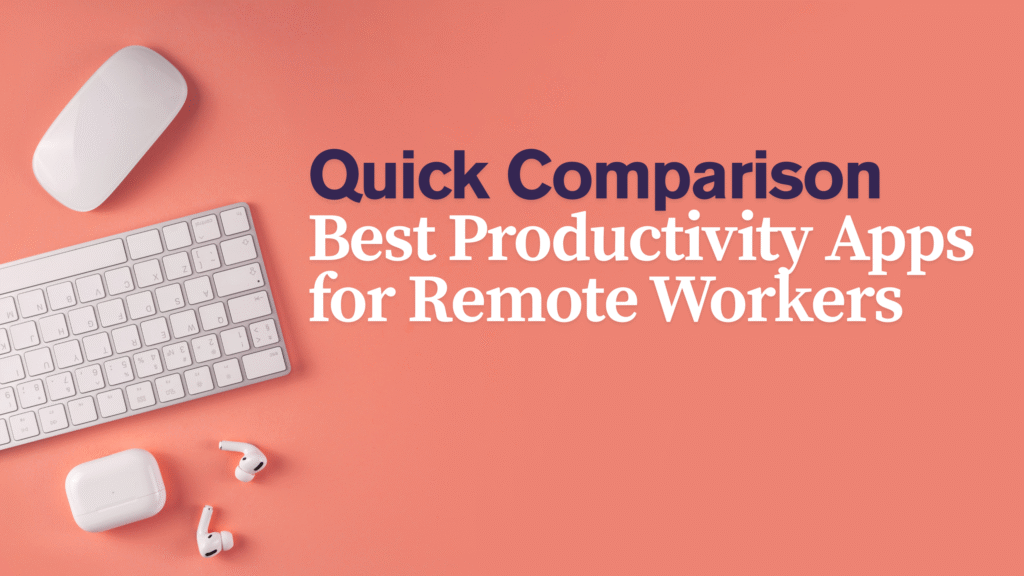
With the remote work landscape more complex than ever, choosing the right productivity tools can feel overwhelming. While each app offers powerful features, not all of them suit every workflow or role. That’s why a side-by-side evaluation is essential before committing to your remote tech stack.
Below is a practical comparison of top-rated productivity apps for remote workers, focusing on what truly matters in 2025 simplicity, cross-platform support, integration potential, and adaptability to different work styles.
| App | Best For | Price (Starting) | Rating (Avg) | Top Feature |
|---|---|---|---|---|
| Notion | All-in-one collaboration | $8/month | 4.8 | Docs + Databases in one |
| Trello | Task Visualization | $10/month | 4.5 | Kanban Boards |
| Zapier | Workflow Automation | $19.99/month | 4.7 | 5,000+ App Connections |
| Slack | Team Communication | $7.25/user | 4.6 | Real-Time Messaging |
| Todoist | Task Management | $4/month | 4.5 | Natural Language Input |
| Clockify | Time Tracking | Free | 4.8 | Unlimited Projects |
| Google Keep | Quick Notes and Reminders | Free | 4.4 | Voice & Checklist Support |
Conclusion: Build Your Own Productivity Tech Stack
The best productivity apps for remote workers in 2025 aren’t just tools they’re digital teammates. Whether you’re a freelancer juggling clients or a remote team lead managing multiple projects, the right app stack can amplify your output and reduce stress.
But remember, no single app will do it all. The secret lies in how you combine and customize them for your unique workflow.


